As an editorial staff, we have long discussed and reflected on what our role could be in this strange time.
We have been listening, we have taken part, in a more or less direct way, in some of the many initiatives that in recent months have questioned photography and its role in the documentation and in the storytelling of the emergency we are experiencing. Eventually, we decided to try, with this editorial, to trace an original narrative, which was both subjective and, in its editing, choral and collective.
As Gianni Rodari wrote in his The Grammar of Fantasy, “stories are searched swimming under water” [le storie si cercano nuotando sott’acqua]; because when you throw a stone into a pond the first thing you see are the ripples on the surface of the water, but if you look deeper you realize that the “objects that were each on their own, in their peace or in their sleep, they are called back to life, forced to react, to come in connection with each other”. Because the most beautiful stories are those that hide under the surface of things. And those we wanted to go looking for.
We started a chain, inspired by the famous surrealist game of the cadavre exquis. Chance chose who among us should be the first to write and choose a photographer to send the text to, asking him to respond with an image that would resonate with the words and to send it, in turn, to another member of the editorial staff, of his choice. And so the chain went on, until the last link.
The result is a twine of words and images that speak and interrogate each other, overcoming each other’s limits, and which give us back a maybe unlikely, certainly unconventional and free, vision of a moment that will remain – and must remain – in our collective memory for a long time.
//
How many times, in front of a landscape or an urban scenario, I wished for people to disappear, as if by magic, to take a photograph without those disturbing elements.
The void and desolation of the worst days of the pandemic made me regret those thoughts. In the few times I ventured out of my confinement, I found myself in front of an unreal space. Unrecognizable, but yet only #duecentometridacasa, two hundred yards from home. Silent, the drama that was taking place somewhere else, away from me and, wrapped in my cocoon of security as I was, it seemed like a distant nightmare.
The first feeling of peace was followed shortly by a sense of anguish: what laid in front of me itself to me was not a free and boundless territory, but a void that resonated with absence. The deafening silence, broken only by the continuous and excruciating scream of the ambulance sirens brought me back to reality, reminding me that often sight, alone, can be deceptive.
(DM)
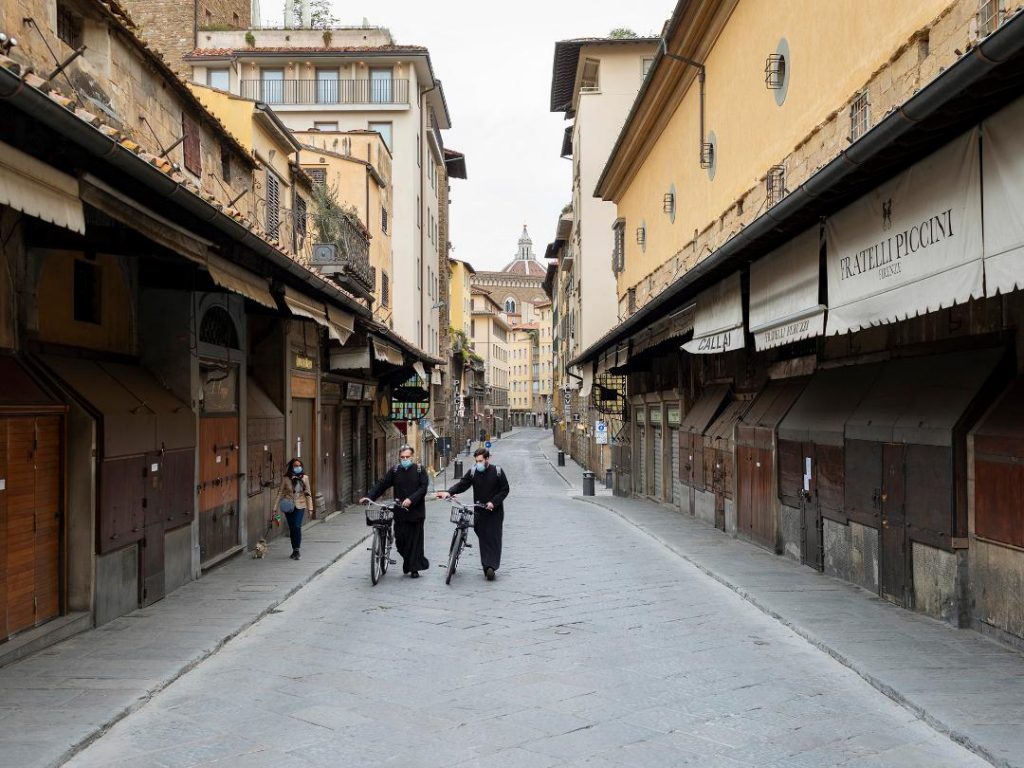
Suddenly every certainty was shattered; everything we knew appeared unreliable, irrevocable. Similarly, the cities and all the places where our lives were so far spent, had undergone a transformation: from existential tourbillons to desert: motionless and silent.
Suddenly our homes have become our refuge. And yet, something was still hiding in the streets, until a few days ago; certainly, it’s little more than glimmers of dialogue with the great void, as in a stage where the actor’s role has taken a metaphysical and surreal turn, where every light, every shadow, every reflection, seemed to express something else.
The space of the cities – whose form tells ancient stories which we find in our inner memory – originated unusual cosmogonies, still crossed by individuals whose identity, hidden by masks and upset by social distancing, has undergone a dystopian and disturbing fascination…
Who are them? Faces and expressions that we know and hold dear, suddenly become strangers? Through these unrecognizable faces, is it us or them that we observe? And what do we discover by making eye contact? Can we still recognize eyes that we would have been able to describe, that would have told us, in an instant, more than a thousand words, and that now, instead, are only a fragile, naked portion before us? Will we have to start looking at the other from us – and ourselves – in a different way to be able to grasp their peculiarities?
Is it a new world that we have seen? Is it a strange and disturbing humanity that we took a glimpse of? Or is it just normalcy – and what we thought it was – that deconstructed its coordinates? Is it something built in someone we need to get to know again?
What can be captured in a shot?
(AI)
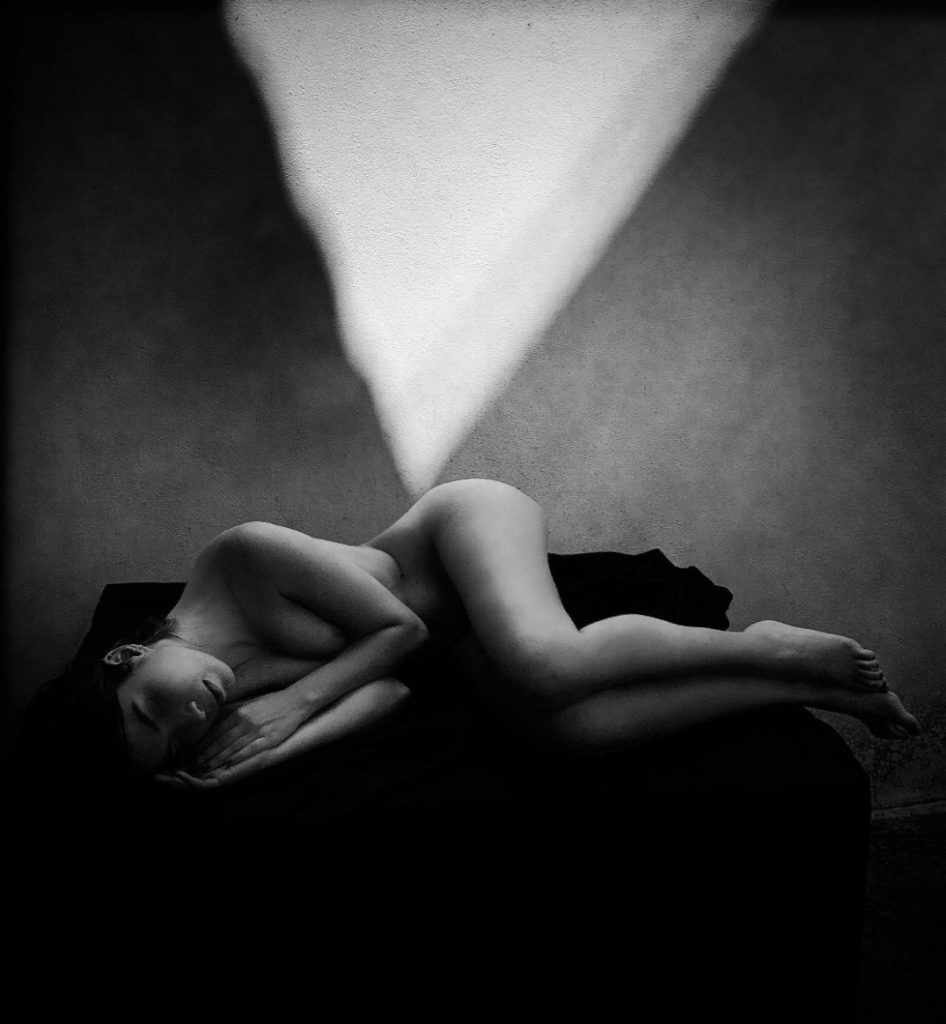
“Cosimo was on the oak. The branches were waiving, high bridges over the earth. A light wind was blowing; it was sunny. The sun shone among the leaves, and to see Cosimo we had to shield our eyes with our hands. Cosimo looked at the world from the tree: everything was different, seen from above, and that was already an entertainment. The avenue had a completely different prospect, and did the flower beds, the hydrangeas, the camellias, the iron table where one would have coffee in the garden. Farther on, the foliage thinned down and the vegetable garden sloped down into small terraced fields, supported by stone walls; the low hill was dark with olive groves, and behind it, the village of Ombrosa raised its roofs faded brick and slate roofs, and ships’ flags peeked out from the harbour below. In the background the sea extended, high on the horizon, and a slow sailing ship passed by.” (Italo Calvino, The Baron in the Trees)
In these strange times, we have taught our little Zeno an important word: imagination. We taught him that with fantasy you can go everywhere, even when you are confined to your house. With him and thanks to him, we have built a new lexicon, pursued new narratives, observed new relationships between reality and dream, between the reachable and the inaccessible.
(CR)

The time of waiting came and the spiteful time turned into an indefinite being.
The distance is unbridgeable. The journey is impossible to make. Imposed barriers divide us.
The mind does not calm down at lost freedom, except for an image that suddenly strikes the gaze, so that new encounters and new places take shape in thoughts.
The journey undertaken reveals hidden desires and unexpected fears.
Still and motionless at the desk, the place to be explored is familiar and unknown at the same time.
Pervaded by uncertainty and frightened by that dark rocky depth, thoughts wander in ancestral places, bringing us back to the origins of our being.
What we want is what we have taken for granted for such a long time: everyday gestures, hoped-for encounters, familiar places and sounds, like that of the dancing leaves in the graceful caress of the wind of a spring afternoon.
The motionless time begins its dance, a symphony envelops the wild vegetation and familiar scents give us the salvific power of imagination. The journey made “in the depths of the image” has taught us the way to pursue our desires and will nourish us until the day we lose the unrepeatable beauty of a simple everyday moment forever.
(CS)
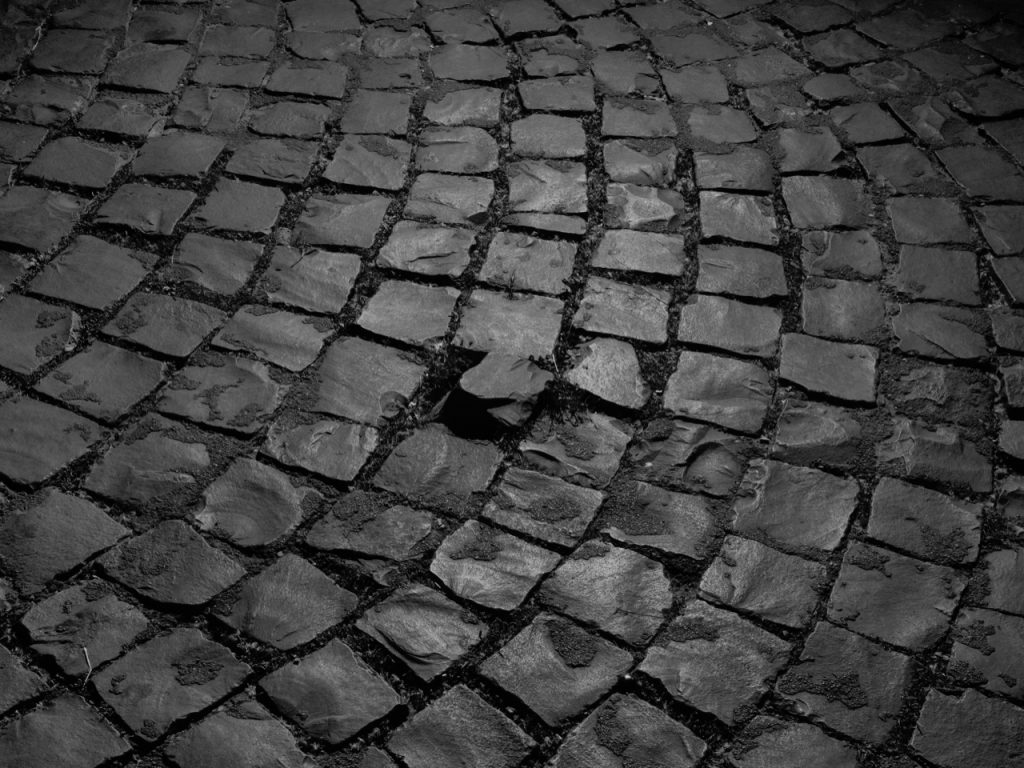
Cobblestone. Night. Dark, dark vision, but perhaps not completely. A light illuminates the path, perhaps showing the way out.
“We are as in autumn, on branches the leaves.”
(Giuseppe Ungaretti)
In times like these, like never before, I believe that this poem is most appropriate to describe us being so “mortal”.
A thousand sensations, a thousand moods so far apart.
Loss. The pleasure of silence. The thousands live broadcasts on Instagram. The emptiness of urban spaces. Clean air. The desire to go out. The lack of human contact. Distrust of others. The lack of Freedom.
“Freedom is not sitting on a tree
It’s not even having an opinion
Freedom is not an open space
Freedom is participation”
(Giorgio Gaber)
And finally anger. So much anger. Politics, interests and a thousand questions.
Will we come out better?
It is pointless to leave posterity a far from arduous sentence.
(ES)
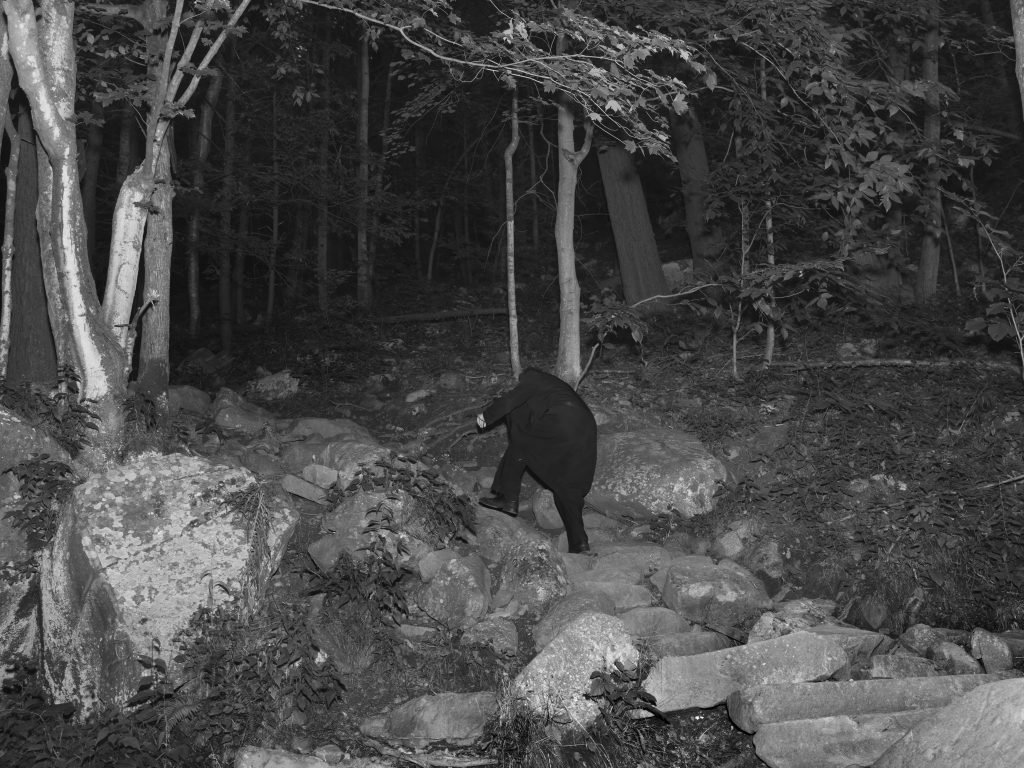
In the darkness, the analogical fullness of photography falters, reality gives way to the indefinite nature of shadow that hints at the contours of the visible without fully revealing it.
The mind sinks into the depths of the darkened gaze – one could exclaim with Novalis – and you, mysterious night, made the excessive light of day pale and flat, light which reveals and describes everything without leaving room for restlessness and doubt.
A deep darkness surrounds us all, but we continue to believe that we live in the light, even if it is only a semblance of light.
The mere act of photographing seems unhealthy to me, as if the gaze had become opaque, portrayed ever more in the face of the ineluctable fullness of reality, of the destruction of the planet by man and its return in images. As if, like Saramago’s characters, I had suddenly become blind, surrounded by multitudes of blind people who see, blind people who, although looking, do not see and images that, while showing, do not reveal.
Metaphor of a humanity weighed down by guilt, which struggles and sinks into the darkness, looking for an unlikely escape; the pandemic has forced us to turn our eyes inward, to ask ourselves again to account for our being on earth.
Perhaps to dig into the folds of what we repressed, to wonder about the responsibility of the gaze, the sense of photographing and narration. Which for me, as in poetry, lies in being able to dialogue with the invisible, even if terrible, which, when evoked, becomes reality, presence, gaze and thought. Maybe even change.
(DT)
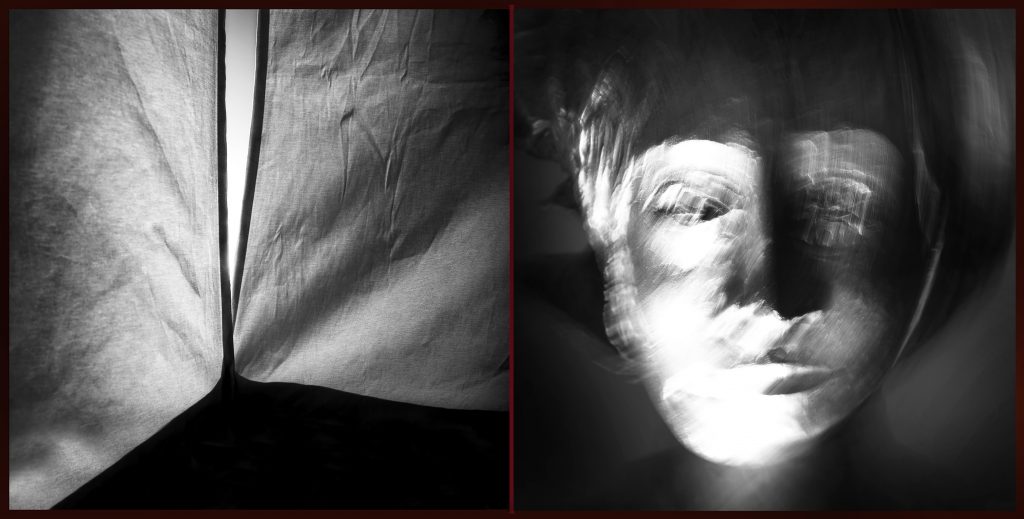
Transfiguration of a crystallized face in a metaphysical position between real and unreal, between light and pitch black,
between Life and death.
In a situation of disbelief and uncertainty.
Inhibited by the helplessness of being able to choose.
Beauty and perfection that crumble, cut into a thousand pieces still united, yet we do not know
how long for.
A gaze that tries to communicate but is frozen by the oblivion of itself, a gaze that reflects
the universality and supernaturality of the situation,
a synthesis of infinity that expands
but it is contained in the moment of thought that makes it one.
It is a game for two, between the observer and the subject,
the gaze bounces between itself and the communication of itself,
but it is an icy look, which has lost its desire or ability to communicate, and now abandons itself to the will of the other and to a fate
that someone else has decided for it.
(PM)
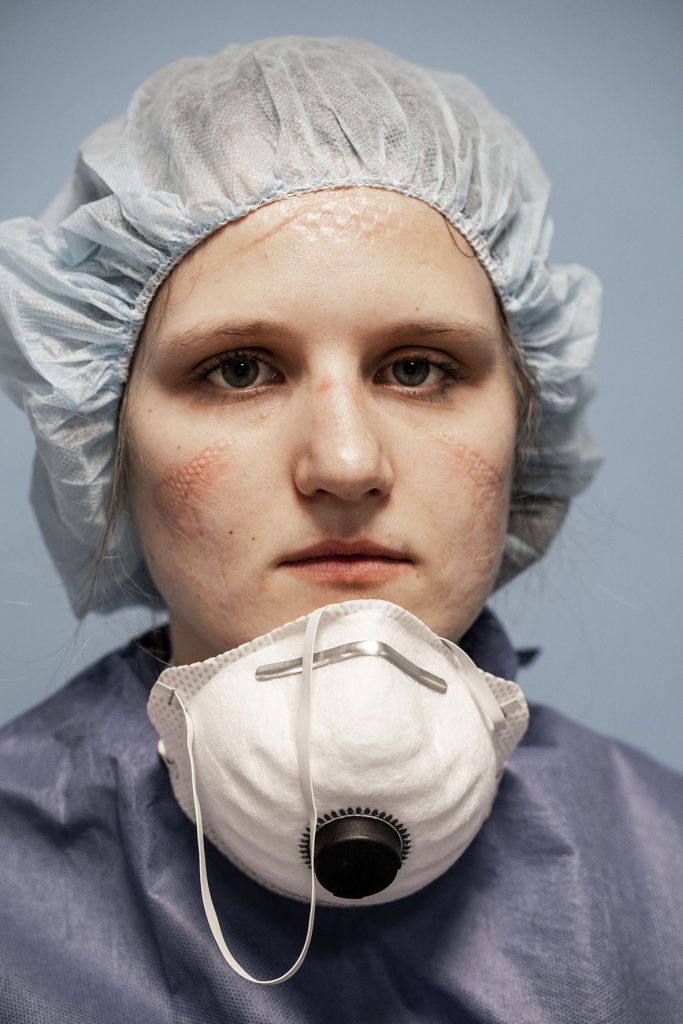
“The whole universe obeys love”
The unnatural, deep marks on the skin.
Faces transfigured by fatigue, pain and courage.
Tired, intense, confident eyes. The blue.
It is about love that I want to speak.
In this time have you loved? Have you been loved?
Have you been able to love more?
The suspension of time.
Absences. Fears. Reflections.
The vocation to oblivion.
Was it easy to look inside yourself?
I wrote a note and in it was the meaning of life.
I put it in a bottle, of transparent glass
I entrusted it to the sea and it was a dolphin that took it far away.
I greeted him with a wave of the hand.
Around the sky, the wind, the bees, the cities, the molecules,
the trees, the bodies, the blood, the red poppies, the dogs.
It was a new time,
fragile curve,
echo of a becoming.
But above all else.
It is in the eyes of children that I have seen the infinite.
(BB)

“Silence”
“Yet I believe that if there was a little more silence,
if we all were a little more silent,
maybe we could understand something … “
Ivo Salvini (Roberto Benigni)
Silence is the hidden face of a child, the groaning of a woodworm, a metallic whisper that
fills the night.
The silence is invisible as it descends in the cracks of the hours which return identical.
It creeps in, slow and enveloping, like pitch that drips and fills, expands and seals.
Gestures become rituals that shape time. Day and night chase each other like lovers,
fading into each other in an infinite circle.
Sleep is heavy and deep, ancient memories resurface. Clad in an ideal embrace, we find
ourselves fragile and naked.
Deprived of the reassuring voice of life, we leave excuses and pretexts, the myths vanish.
Silence is a suspended eternity.
And then, outside, the world shows faded tones. It starts quietly, dazed and confused,
as if coming out of the dark into the light.
The city is suspended, the passers-by lost. No voices vibrate, no evening laughter resounds;
veiled glances elusively escape.
Yet, in the silence a deep voice resounds, the ears relax, we find a glimpse of unexpected
destinations.
It is in the silence that you learn to listen.
(DO)
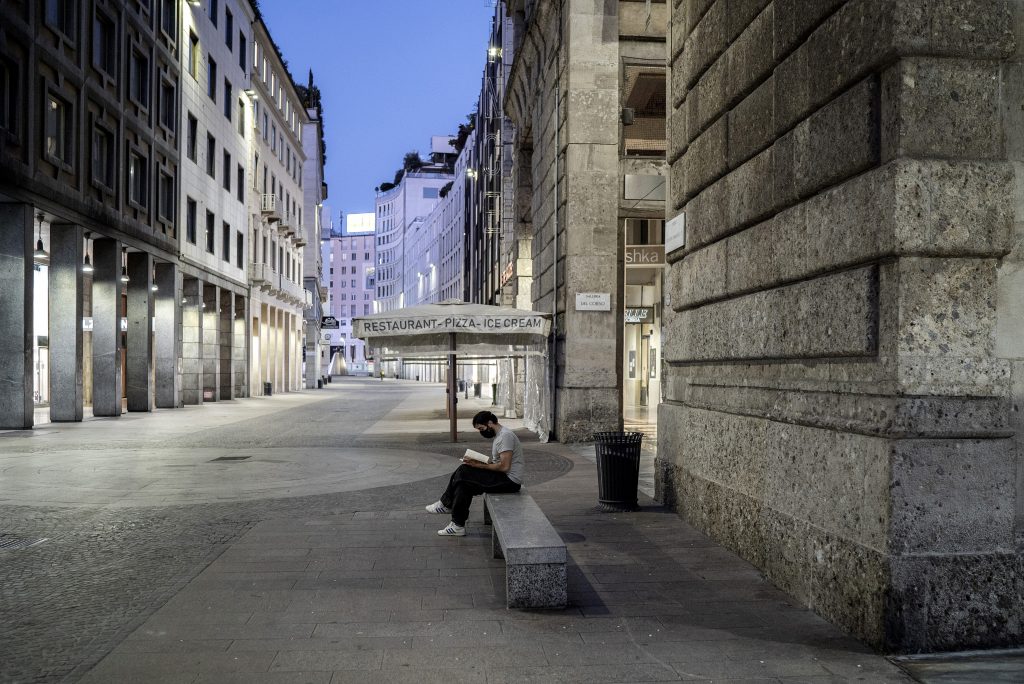
June 11, 2020




